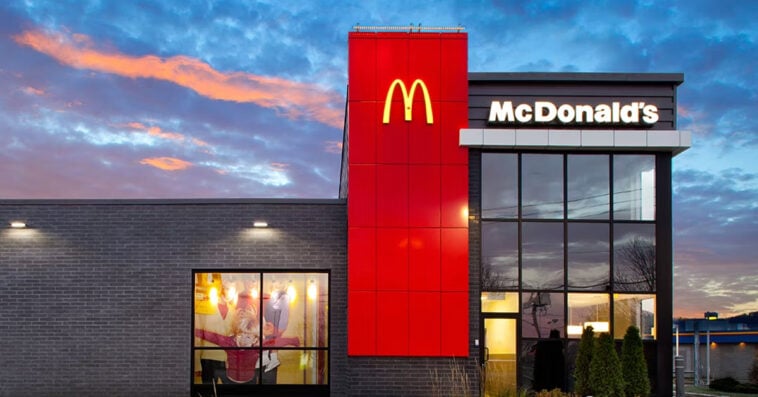America’s economic divide is growing, and McDonald’s is seeing it firsthand. According to CEO Chris Kempczinski, a “two-tier economy” is emerging, where lower and middle-income customers are feeling the financial strain of rising costs. This pressure is causing them to cut back on discretionary spending, forcing them to skip their daily breakfast at the fast-food giant. And while McDonald’s is rolling out strategies to win back budget-conscious diners, the bigger question looms: is this just a short-term setback—or a troubling glimpse of where the U.S. economy is headed?
McDonald’s flags growing divide between rich and poor consumers
Speaking with CNBC on Tuesday, McDonald’s CEO Chris Kempczinski acknowledged the mounting strain facing many Americans. He noted that lower- and middle-income customers “are under a lot of pressure in our industry.” According to him, “Traffic for lower-income consumers is down double digits. And it’s because people are either choosing to skip a meal—so we’re seeing breakfast, people are actually skipping breakfast—or they’re choosing to just eat at home.”
Kempczinski went on to describe the growing divide, saying, “It’s really kind of a two-tier economy. If you’re upper income, earning over $100,000, things are good. Stock markets are near all-time highs, you’re feeling quite confident about things, you’re seeing international travel, all those barometers of upper-income consumers are doing quite well. What we see with middle and lower-income consumers is actually a different story. It’s that consumers are under a lot of pressure in our industry.”
The company has observed a sharp decline in spending among its less affluent customers throughout 2025. On an earnings call following first-quarter results, Kempczinski revealed that sales among lower-income U.S. consumers had fallen more steeply than expected, noting they were down “nearly double digits” compared to the previous year.
“Traffic growth from the high-income cohort remained solid, illustrating the divided U.S. economy where low and middle income consumers in particular are being weighed down by the cumulative impact of inflation and heightened anxiety about the economic outlook,” he added.
Despite this, McDonald’s reported that U.S. sales rose 2.5 percent year-over-year in the second quarter, reversing two quarters of domestic declines. Yet the improvement was offset by continued double-digit losses among its budget-conscious diners. Chief Financial Officer Ian Borden emphasized the challenge ahead, saying, “We’ve got to work even harder to make sure we’re attractive for all consumers, including the lower-income consumer.”
The return of McDonald’s Extra Value Meals
In response to mounting financial pressures on its customer base, McDonald’s is once again turning to affordability as a way to keep diners coming through its doors. The company, along with other chains, is leaning on budget-friendly offerings reminiscent of the “recession specials” that gained traction during the 2008 financial downturn. On Tuesday, the fast-food giant revealed plans to reintroduce its Extra Value Meals, starting September 8. Among the limited-time deals are a $5 Sausage McMuffin with Egg meal, an $8 Big Mac meal, and additional discounted bundles designed to appeal to cost-conscious customers.
Why McDonald’s ‘two-tier economy’ warning matters
Recent consumer confidence reports show a growing sense of pessimism among Americans about both the broader economy and their personal finances in 2025. This unease stands in sharp contrast to the strength of U.S. stock markets and large corporations, reflecting what Kempczinski has labeled a “two-tier economy.” Analysts warn that President Donald Trump’s tariff policies could intensify this divide, with lower-income households likely to bear the brunt as higher import costs are passed along to consumers.
Because household spending makes up about two-thirds of U.S. GDP, any pullback from struggling groups could ripple through the economy. Moody’s Analytics notes that wealthier Americans already account for half of all consumer spending, but companies like McDonald’s—dependent on lower- and middle-income traffic—face particular vulnerability if this segment continues to tighten its budgets.
Moody’s Chief Economist Mark Zandi explained the potential risks in an interview with Newsweek: “If prices rise, consumers grow more cautious. Will businesses respond to that by starting to lay off workers? If they don’t, then I think the economy can continue to kind of muddle its way through here, get to the other side of the tariff effects and the immigration effects. But if businesses start to increase layoffs, then that’ll set off a kind of self-reinforcing vicious cycle—layoffs, less spending, less spending, more layoffs.”

